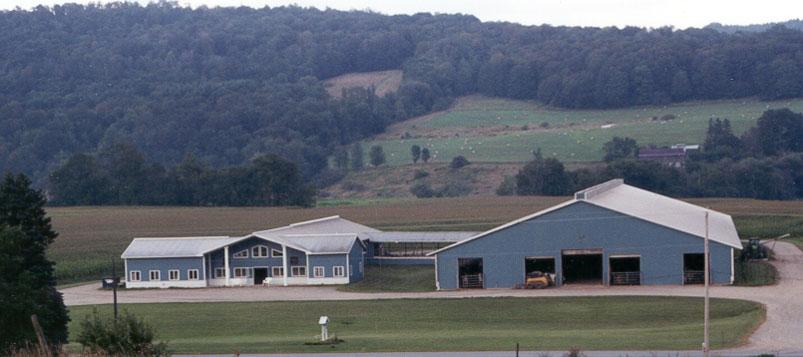The Pennsylvania Farm Bureau said in a press release on Thursday, Aug. 13, the EPA’s final definition for “Waters of the United States” under the Clean Water Act ignores the concerns of farmers by failing to keep agriculture exemptions in place as promised.
Relying on new maps released by the American Farm Bureau Federation, the PFB states the new rule’s regulatory reach will radically expand its jurisdiction over most of the farmers’ land use.
The intent of the amended rule was to clarify which streams and waterways are subject to permitting before farmers can institute certain practices on their land. Two U.S. Supreme Court rulings had narrowed the scope of the Clean Water Act and placed some waters in a gray area.
Farmers complained in 2014 that the EPA’s clarifications were confusing and sought to expand its regulatory power. The EPA responded in a question and answer document that the proposal was not an expansion of jurisdiction.
But that’s just not the case according to the PFB. The final rule is “extremely complicated and confusing, but also vague,” effectively giving the EPA unlimited power to determine whether a tract of land is subject to the new regulation, said PFB President Rick Ebert in the release.
Unlimited Power
Last September, the Epoch Times reported on farmers’ concerns that proposed changes to the Clean Water Act’s definition of Waters of the United States would require them to obtain costly permits for everything they did on their land.
New York farmer Michael McMahon previously told the Epoch Times he was already strictly regulated by state law intended to implement the Clean Water Act, and those laws helped him to make “common-sense, cost-effective, and science-based decisions.”
Farm bureaus, municipalities, and other affected organizations challenged the EPA’s proposed rule changes and sought assistance from Congress to ban the rule, noting the EPA was acting beyond its scope by changing the rule.
After reviewing the recent maps released by the AFBF, the PFB said everyone who owns land in Pennsylvania should be concerned. “For farmers, it could mean new requirements for federal permits, restricting farming on existing land and severe penalties for using crop protection tools that are safe, scientifically sound and federally-approved,” said Ebert.
The maps of three states including Pennsylvania, were prepared for AFBF by Geosyntec Consulting based upon the language of the new rule, which frequently used the term nexus to denote a water source that could potentially drain into a larger body of water.
The Pennsylvania map shows that most of the land in the state could be subject to the nexus criteria and therefore regulated. PFB also questions the validity of the science applied in the final rule, and states that documents from high ranking officials at the U.S. Army Corps of Engineers (the agency that purportedly joined the EPA in finalizing the rule) indicate it “identified problems with the science applied by the agency and EPA’s use of a flawed economic study in attempting to ‘justify’ its rule.”
According to the statement, Corps officials concluded the final rule was inconsistent with the court rulings and undermined the legal and scientific credibility of the rule.
But the new rule, finalized in June and taking effect Aug. 28, is not intended to establish any regulatory requirements, according to the EPA’s announcement in the Federal Register, and it will provide less restrictions than the original regulation.
The purpose was to more clearly define the term “Waters of the United States,” which was based on “using the goals, objectives, and policies of the statute, the Supreme Court case law, the relevant and available science, and the agencies’ technical expertise and experience as support,” the announcement states.
The new definition “puts important qualifiers on some existing categories such as tributaries,” therefore fewer waters will be identified as Waters of the United States. The agency reiterated its commitment to protect Waters of the United States from pollution and destruction.
Similar clarifications were made last year and farmers just aren’t buying it. The PFB is calling for the EPA to withdraw the rule and commit to starting the process over “by listening to farmers, builders, other stakeholders and representatives from the 30 states that are suing EPA over the rule,” concluded Ebert.





